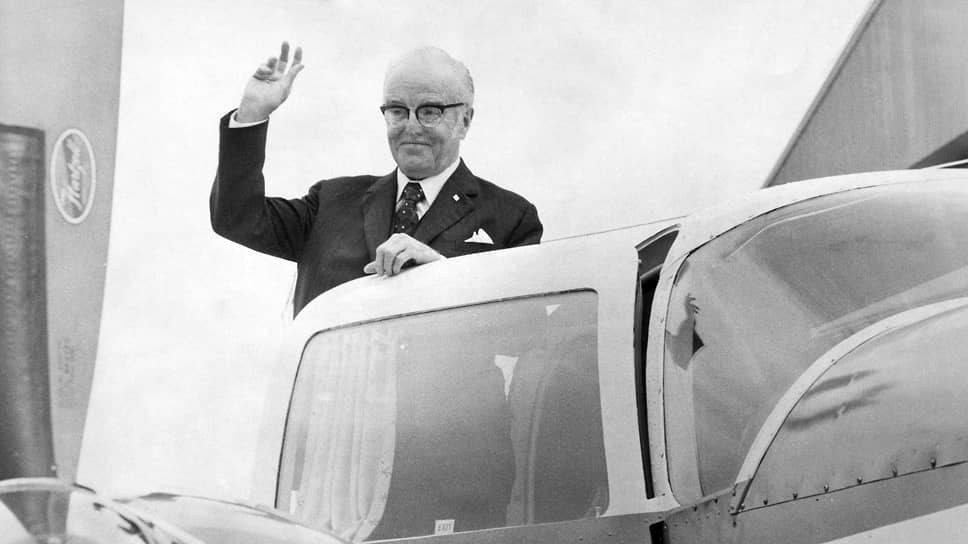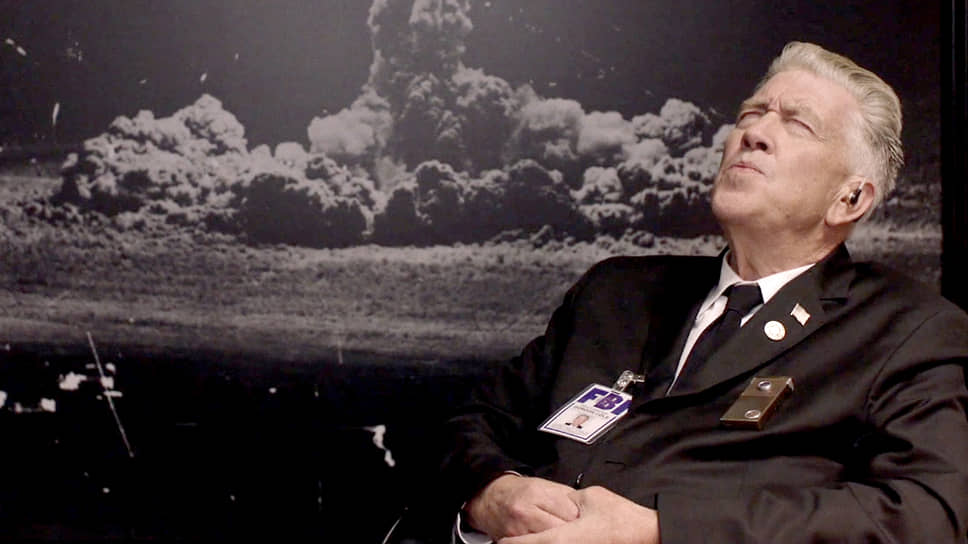Jerry Springer: The Story of an American TV Host
[ad_1]
On April 27, at the age of 79, American TV presenter Jerry Springer, best known for the TV show of the same name, which he hosted for almost 30 years, died. He came up with a completely new format for such programs at that time. And it’s not even about the topics that he raised: from early pregnancy and non-standard sexual preferences to discussions of real crimes involving victims and probable criminals. His show allowed for something that had not previously been in such programs. His guests shouted, insulted each other, even fought. The highbrows spoke of Springer with contempt. He was mocked and parodied. Nevertheless, his show for many years was perhaps the most popular on television.
A young politician from the London Underground
Few people do not know Jerry Springer – a TV star, a man who forever changed American (and not only American) television. But it is now. And once upon a time, Jerry Springer himself would have been surprised if someone had told him that. He became a journalist only at the age of 38, starting as a political observer on NBC’s WLWT.
And what about the first almost 40 years of life? Jerry Springer was born on February 13, 1944 in a rather unusual place – in the London Underground. There, his family, like thousands of other residents of the capital of the British Empire, took refuge during the bombing. His parents, shoe store owner Richard Springer (although then more likely Richard Springer) and his wife Margo, who worked as a bank clerk, were Jews who had fled to Britain from Nazi Germany.
Shortly after the war, in 1949, the family moved to the United States, where they settled in the New York area of Queens. Jerry graduated from high school there. And, according to his own stories, he became interested in politics quite early, at the age of 12 he watched on TV a speech by John F. Kennedy, then a senator from the Democratic Party.
Kennedy thus defined Springer’s education and career. Jerry studied political science and law at Tulane and Northwestern Universities.
While still at university, Springer proved to be a political activist, participating among other things in student protests against the Vietnam War.
In 1968, Springer graduated and for the next 15 years or so lived in full accordance with his education, either in politics or working in law firms. While still a student, he managed to work in the 1968 presidential campaign of Robert Kennedy. And in the 1970s, for several years he was a member of the city council and mayor of the city of Cincinnati.
Even then, Springer gained fame as a man at least extravagant.
When the city government took control of the local transportation company, Springer “hijacked” the bus and drove it around the city. He could voluntarily lock himself in a prison cell to draw attention to the poor conditions of the prisoners. And once he was convicted of using the services of prostitutes.
As long as it was limited to Cincinnati, he got away with it. But in 1982, he swung for governor of Ohio. And this was the last step in his political career. The democrat and lover of prostitutes did not fit into the then political landscape with its rise of neoconservatives, the main one of which was US President Ronald Reagan. Springer realized that he had no place in politics. By that time, he no longer wanted to engage in law, and he abruptly changed his career, becoming a journalist.
Fights and scandals live
For almost a decade since 1982, Springer has been a quite successful and well-known political columnist for NBC WLWT. But he clearly wanted more. And, after persuading his television bosses, in 1991 he launched his own daytime show, The Jerry Springer Show.
Before the world-famous “Jerry Springer Show” with obligatory fights, tears and the presence of jocks in the frame, which it will become later, the first seasons of the program were still far away. The former mayor of Cincinnati and a boy from a good Jewish family did not go into politics, but discussed quite pressing and serious social problems – rising unemployment, the situation of the homeless, the spread of drug addiction and the problems associated with the easy availability of firearms.
The show did not bring Springer great popularity, if only because there were a great many such shows on American television at that time. They say that they were already thinking of closing it when Springer made drastic changes to the program. They did not deal with topics that, at least at first, remained the same socially significant: juvenile delinquency, drugs, underage pregnancy, and so on. The approach has changed.
If in the first seasons the viewer was invited to understand the problems discussed, then in the new format he was offered to enjoy these problems. The main goal was to evoke emotions – whatever.
And Springer himself and the writers of the show manipulated these emotions. Jerry skillfully pitted the guests, where necessary – insulting, where necessary – provoking, waiting for a reaction, sometimes physical, from the guests.
At some point, serious questions on The Jerry Springer Show began to be answered with the phrase “Go to Oprah with this,” referring to the also very popular, but much more serious Oprah Winfrey Show. By the end of the 1990s, “Jerry Springer” bypassed this transfer, and Winfrey herself somehow called his creation “a show of vulgarity.” By 1998, the Springer show had an audience of 6.8 million daily viewers.
By this time, the show had already been reborn. From the social orientation Springer refused altogether. Here are a few episode titles that reflect both the choice of topics and the overall level of the program: “I broke the world record for sex”, “I’m happy that I cut off my legs”, “You slept with my stripper sister.”
In one of the episodes of the show, the guest character complains about his relationship with his wife. Springer, “unaware” of the guest’s wife, asks to be brought to the studio. A horse is brought out from behind the curtains, which the hero considers his wife. The episode turned out to be one of the most explicit and most popular. And the fact that in some cities it was banned from showing due to moral considerations did not prevent this at all.
How did The Jerry Springer Show not interfere with reviews in leading American newspapers, calling it a “thrash show” and something “the closest thing to pornography of all that is on television.”
The theme, of course, was consistent with the style of the show. Every time now the presenter was called by the crowd from the audience shouting “Jerry! Jerry! Jerry!”. The participants increasingly swore dirty, shouted at each other and even fought. Springer considered his decision to invite members of the Ku Klux Klan and representatives of the Jewish Defense League to be on the show. That live fight was remembered for a long time.
Springer himself masterfully played the role of a man shocked by the very fact of the existence of human vices. “He takes dry tinder and lights a match, but he is always so shocked, so shocked when a fire starts,” journalist David Plotz described ironically.
Around the show there were many very real scandals and dramas. One contestant appeared on the show along with her ex-husband, ex-lover, and ex-husband’s new wife. All of these intertwined relationships were heatedly discussed throughout the show. It all ended in tragedy. Shortly after the broadcast, the woman was killed.
Promoting Shamelessness, or the Mirror of Society
Jerry Springer, as it is now commonly believed, did not just create a new show, pushing to the limit (and maybe completely destroying them) the limits of what is permitted. He incredibly influenced the future of television shows in many countries around the world. “By helping to normalize the outrageous in culture, it taught content creators that shamelessness is a lucrative industry,” writes the online analytical publication. The Conversationadding that it has proven to be “an astoundingly long-term and profitable product.”
According to The Washington Post“The Jerry Springer Show” foreshadowed the video boom on the Internet with a huge amount of violence, pornography, recordings of car accidents, bloody fights and other similar content.
Critics believe that the show promoted what linguist Deborah Tannen called “the culture of squabbling” and which subsequently became very popular on social networks. This is understood as a style of conversation in which the parties perceive each other not as interlocutors, but as enemies and simply try to bombard each other with arguments, aggressively attack someone else’s position. The appeal to emotions, the attack, the complete unwillingness to hear the opponent – all this in such discussions turns out to be an advantage.
Other critics point out that the guests of the show, who were offered to be laughed at and horrified by the audience, often belonged to vulnerable groups, so they needed help, not ridicule. “The show consistently perpetuated stereotypes about some of the most vulnerable groups in the US population, primarily the poor, black, transgender people,” writes huffpost.
“Very much like it was done to entertain the white and middle-class majority,” says Bryant University history and sociology professor Veronica McComb. it’s like a reality that feeds the white imagination and reinforces the historical notion that blacks are naturally violent or incapable of rational choice.”
Not everyone agrees with the criticism of the show. Men’s Health wrote in response to Springer’s criticism that he was simply “holding a mirror to society.”
Springer himself once said in an interview CNNthat he doesn’t mind being called the “grandfather of thrash TV”. “Yes, that seems to be quite accurate. I don’t know how much merit this is, but it’s true that we were probably the first show to show something outrageous, ”he said.
In total, for almost 30 years – “Jerry Springer” ran until 2018 – there were about 5 thousand episodes of the show. The peak of his popularity came at the end of the 1990s, when such a show seemed to be something unusual and new. After 2018, Springer hosted several other shows, including the court show Jerry Jerry, but none of them were even close to being as popular.
And Springer has become a popular character in popular culture. He regularly appeared as the hero of films and TV shows – including Austin Powers, Married … with Children, The X-Files, and usually he played these roles himself.
[ad_2]
Source link










